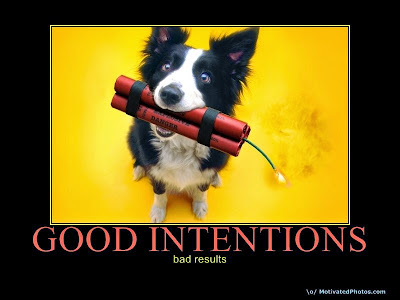Há dias aqui no blogue, em "
O fragilista e o diabo", senti a necessidade de complementar uma análise com o recurso a ligações para outros textos relevantes para o tema (uma técnica em que o jornal digital Observador me copiou, ehehehe), numa dessas ligações quis fazer um video com uma monumental comunicação de Alicia Juarrero sobre a diferença entre o fragilista, o arrogante, o tolo fail-safe e o antifragilista (Nassim Taleb talvez não concorde e refira que é apenas resiliente) safe-fail. Como constatei que o video de 2015 já não está no endereço inicial, procurei outro vídeo que ajudasse os incautos a avaliarem o calibre da senhora. E foi assim que acrescentei este
vídeo depois de o escutar (entretanto, descobri no Youtube o vídeo original de 2015 e acrescentei-o ao blogue).
Ainda bem que o primeiro vídeo foi apagado, porque este outro é ainda melhor, abordando ainda mais temas. Um desses temas é o do papel do tempo. Quis saber mais, por isso pesquisei e descobri um livro de Alicia Juarrero (na verdade encontrei vários, mas uma fonte qualquer dizia que um era o melhor), que arranjei na internet: "
Dynamics in Action: Intentional Behavior as a Complex System"
Analisei o índice e resolvi ler, para começar, os capítulos 1, 7 e 8.
E começou o festival. O capítulo 1, "How the Modern Understanding of Cause Came to Be", abre com Aristóteles e o lançamento da carga ao mar, ou nos tempos modernos, a aplicação da austeridade.
Lembram-se? Passos era um ogre mau que aplicou austeridade voluntariamente, porque era mau como as cobras e queria provocar sofrimento. Comparem com a explicação que os media vão dar em 2020 ao reforço da austeridade pelo próximo governo: é uma acção involuntária, há que sobreviver à tempestade ( mas eu sofro o castigo máximo que os deuses podem aplicar a um humano, tenho memória e ainda me lembro do
capitão que prometeu que com ele não haveria mais tempestades). BTW, os membros do tribunal constitucional deviam aprender a
Lei de Rhodes.
No capítulo 7, "Some New Vocabulary: A Primer on Systems Theory", encontro uma reflexão preciosa sobre o papel do tempo. Alicia Juarrero usa Galileu e Newton para balizar a época em que o tempo não fazia parte da ciência. Segundo ela, ainda estávamos a viver da herança filosófica grega das coisas terem uma essência.
Parei. E os meus olhos abandonaram o ecrân, e olharam o horizonte. E fiz a ponte para o jovem
Léon Walras em Paris, maravilhado com a ciência do seu tempo, qual Greta, e a querer criar uma ciência nova, hoje conhecida por economia. (Como aprendi em "
The Origin of Wealth: The Radical Remaking of Economics and What it Means for Business and Society" de Eric Beinhocker)
Talvez os alicerces da economia como ciência tenham sido criados, confesso que não fui ver, antes de Darwin e da entropia, (mas teve de ser num tempo em que ainda não havia a Matemática capaz de trabalhar as equações longe do equilíbrio). Por isso, percebo melhor o quanto me passo com académicos e políticos que falam de economia sem referir
o vector tempo, sem considerar o contexto (imaginem seguir as indicações de Catarina Martins ou do futuro primeiro ministro Pedro Nuno Santos e não pagar aos alemães... Só quem não considera o tempo é que não vê as consequências,
amadores a jogar bilhar). E aqui no blogue uso há anos recorrentemente a referência a
Galileu, à ciência
Newtoniana e à
histerese, para chamar a atenção para a importância do tempo na Economia. Entretanto, vou sofrendo com a tríade. Lembram-se?
Os paineleiros, os políticos e os académicos, gente sem skin-in-the-game que manda postas de pescada sem nunca terem queimado pestanas no mundo real.
Para Galileu uso esta imagem das experiências na Torre de Pisa:
Voltando ao livro, Alicia Juarrero descreve como a segunda lei da termodinâmica veio introduzir o vector tempo na ciência e como Darwin e a evolução tornaram o factor tempo fundamental. Depois, com Ilya Prigogine introduz-nos num mundo fundamental para o trabalho que realizo nas organizações, a
dinâmica de sistemas e o
pensamento sistémico.
Nos dois vídeos que vi com as comunicações de Alicia Juarrero ela começa sempre com a manifestação de uma surpresa por uma "teórica" ser convidada para congressos de praticantes, de empíricos. Deve ser uma forma de baixar as expectativas iniciais para depois overdeliver. Porque qualquer gestor tem muito a aprender ao ouvi-la a falar do contexto e do tempo.
Nunca me esqueço que eu aproveitava as viagens para o trabalho, e para casa, nos anos 80 do século passado para devorar tudo o que apanhava de
Karl Popper e, dizia para mim: isto tem tudo a ver com o meu trabalho de melhoria de produtos e processos como engenheiro de produto. Ou de descobrir
Ortega y Gasset e dizer isto até dói de tão relevante para o meu trabalho com as organizações.
Exemplos de Alicia Juarrero?
Os académicos derrotados versus os ignorantes empíricos que constroem/descobrem soluções (é um bailado entre os organismos (as empresas) e o meio (a paisagem competitiva):
"For Darwin as well as Aristotle, then, science cannot explain novelty or emergence unless that seemingly novel, emergent, and original event is really neither truly novel, nor emergent, nor a radical new beginning, but instead is already there, folded into the dynamics, just waiting to be unfolded and made actual."[Moi ici: Como não recordar Daniel Bessa e as suas previsões sobre o calçado]
O contexto e a ISO 9001:
"How external to an organism is the niche in which it is located if, over time, features of that environment contribute to specifying the very primary properties of that kind of living thing? An organism's primary properties are, according to evolutionary theory, both a record of past environments and a conjecture about the current one.[Moi ici: Tema deste postal ainda esta semana] The overall species-niche supersystem determines the traits that individual organisms will exhibit. It is known that two animals with the same genotype can be phenotypically different depending on the environment in which they develop. Is this not a form of self-cause whereby the distributed whole influences its components?"
A paranóia da economia académica da busca do equilibrio, e o meu trabalho junto das PME... fugir do equilibrio como o diabo da Cruz. As PME têm de ser criadoras de desequilíbrio. O equilibrio para elas é sinal de morte. Animei uma formação esta semana que no final foi invadida por uns penetras que sem avisar vieram dar um toque final para ligar a formação ao day-after. Um desses penetras, o director executivo da organização, usou várias vezes uma palavra que saboriei e disse que a ia roubar para a usar muito mais vezes: desassossego. As PME devem ser organizações paranóicas a criar desassossego. Como dizia Ortega y Gasset, as PME não podem ser como aqueles que vivem e são em cada instante o que já são, sem esforço de perfeição em si mesmas, bóias que vão à deriva. As PME
não podem esperar pelo futuro, têm de o criar (Ah! Isto é tão Popper e
ccz!)













/https%3A%2F%2Fhbr.org%2Fresources%2Fimages%2Farticle_assets%2F2019%2F07%2FW190709_REDMAN_INVOICING1.png)
/https%3A%2F%2Fhbr.org%2Fresources%2Fimages%2Farticle_assets%2F2019%2F07%2FW190709_REDMAN_INVOICING2.png)


%2006.21.jpeg)












